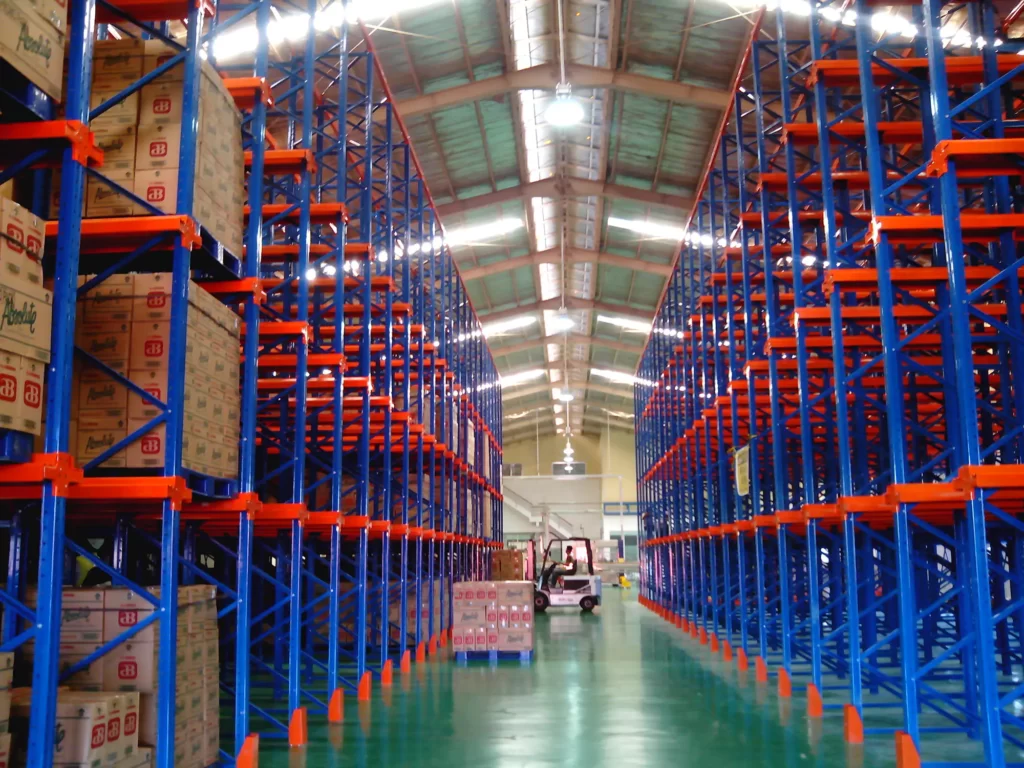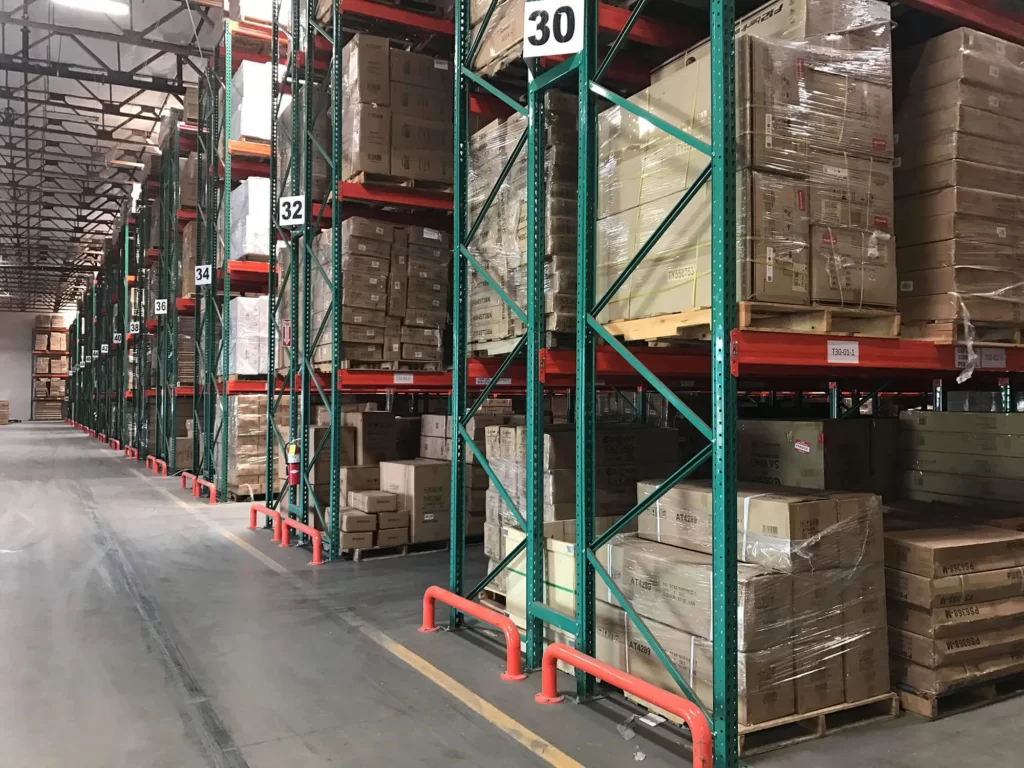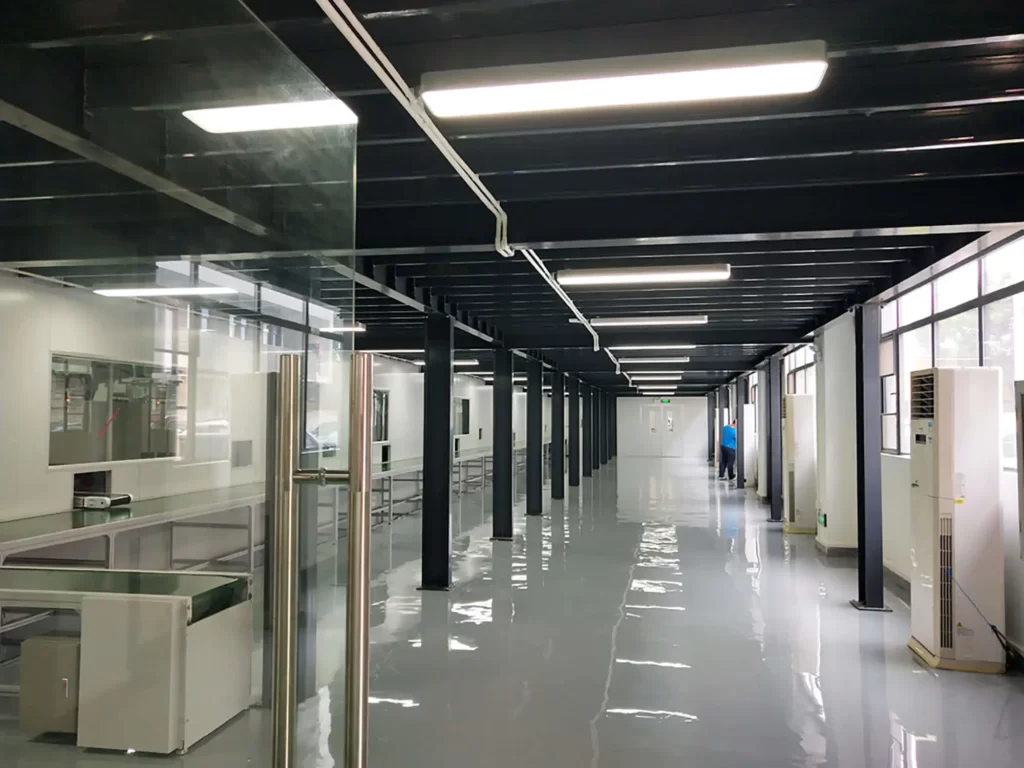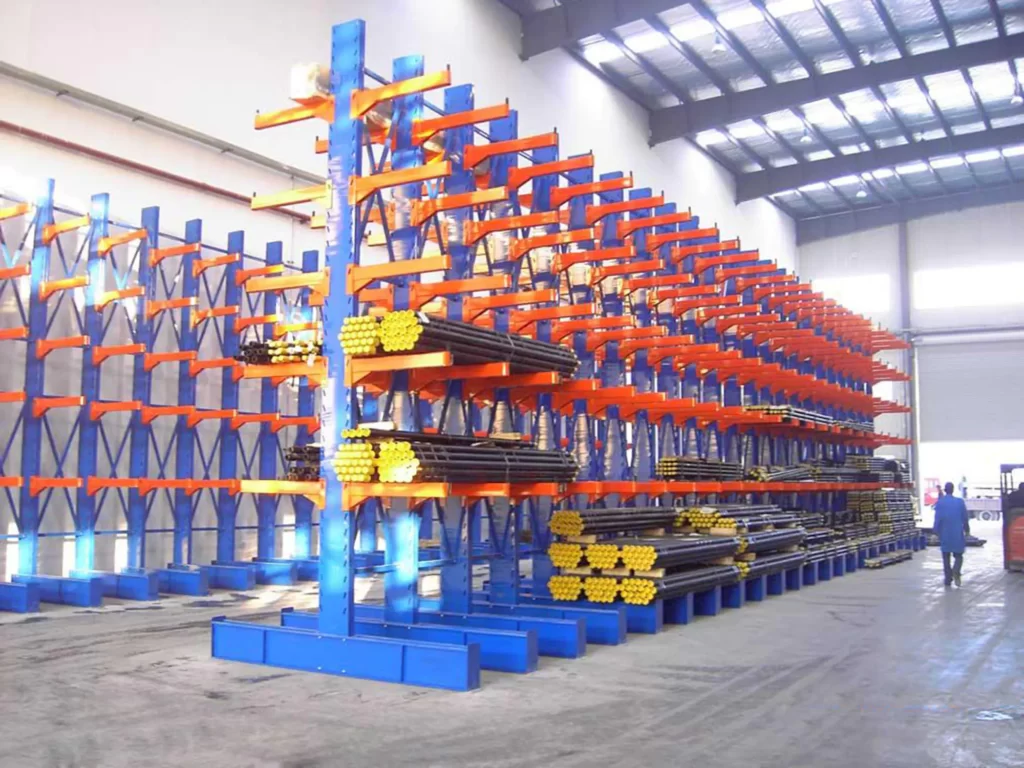Warehousing is not only limited to goods storage, rather it is the power behind the operational supply chains. Regardless if you are managing an e-commerce business or logistics business you cannot ignore the value of modern warehousing. Latest in tech integration into the standard warehousing played a greater role in its transformation from passive storage to pro claimed active solution. Besides it offers a series of advantages.
The aim of this blog is to guide you on how modern warehousing changing the supply game besides highlighting key perks. Sounds exciting? Keep reading!
The Evolution of Warehousing: Smart Logistics Hub from Storage
Initially, warehouses were just places where you stored things. By holding onto excess inventory, they helped businesses manage supply and demand fluctuations. However, modern warehousing needs differ because of increased global trade and e-commerce. In today’s world, warehouses are a major part of the supply chain, having responsibility over everything from order processing to returns.
Using modern warehouses is more than just about putting away goods. They have the technology to process orders fast, reduce errors, and adapt to changing demands. It is essential to shift from traditional warehousing to a smart warehousing due to this competition of today’s market.
Comparing Modern Warehousing Vs. Traditional Warehousing
| Sr. No. | Factor | Traditional Warehousing | Modern Warehousing |
| 1 | Technology | Minimal use of technology | Extensive use of AI, automation, IoT, and robotics |
| 2 | Labor Intensity | High reliance on manual processes | Reduced labor intensity due to automation |
| 3 | Inventory Management | Manual tracking, prone to errors | Real-time inventory tracking with AI-powered systems |
| 4 | Space Utilization | Fixed layouts, often underutilized | Dynamic layouts and optimized storage solutions |
| 5 | Order Fulfillment Time | Slower order fulfillment processes | Faster and more efficient order fulfillment |
| 6 | Cost | Typically higher operational costs | Potentially lower operational costs due to automation and efficiency |
| 7 | Accuracy | Higher risk of errors in inventory and order fulfillment | Improved accuracy and reduced errors |
| 8 | Flexibility | Less adaptable to changes in demand and market trends | Greater flexibility to adapt to changing business needs |
| 9 | Sustainability | Lower focus on sustainability initiatives | Increased emphasis on sustainable practices (e.g., energy efficiency, waste reduction) |
| 10 | Supply Chain Integration | Limited integration with other supply chain systems | Strong integration with other supply chain systems for seamless operations |
Modern Warehousing Powered by Key Technologies
The modern warehousing feature its roots in technology. Multiple innovations exists that are reshaping goods storage including:
Automation and Robotics
Today, automation is key in warehouses. Repetitive tasks are handled by robots such as picking, sorting and packing goods. Picking and sorting by automated systems lessens the speed and accuracy of picking resulting in more orders being processed in less time. These robots, or ‘cobots,’ work alongside workers assisting to lift heavy loads and alleviating the strain on employees.
Autonomous mobile robots are robotic systems that navigate themselves around the warehouse floors, moving the inventory efficiently. If you integrate these automated tools, you can save time, decrease labor costs, and become more accurate at fulfilling orders.
AI and Machine Learning
Warehouses are changing with artificial intelligence (AI). By untangling the relationships and patterns in data, machine learning algorithms can also help make better predictions about inventory needs. For example, AI can spot seasonal trends or predict demand based on past sales. It allows you to have the right stock level, avoid overstocking or stockouts.
The inventory optimization aspect of AI helps keep frequently ordered items closer to the packing stations to reduce unnecessary transportation. It cuts down on time spent in retrieving items and in processing orders.
IoT and Real-Time Tracking
With the IoT, physical devices connect to a network to automatically, hence feeding real-time data on the availability and product environment in stores. First, with IoT sensors you can monitor humidity, temperature, and light levels, which is a must for sensitive products like food or pharmaceuticals.
Inventory tracking using IoT helps avoid losses from spoiled goods and reduces holding cost. Also, you can see real time what’s on stock and plan accordingly as to when to refill if inventory levels are running low. This helps to improve order accuracy and decrease out of stock situations.
Autonomous Drones or Vehicles
Drones have become an indispensable inventory management tools in large warehouses. Without human intervention, they scan barcodes, check stock levels, and perform cycle counts. Autonomous vehicles carry goods in and around this warehouse, cutting down on the need for forklifts and manual handling.
The use of drones and autonomous vehicles impacts inventory counts and lowers labor costs. This technology helps reduce errors because automated systems are less prone to miscount than humans.
Warehouse Management Systems
Warehouse Management Systems are a digital platform used to coordinate warehousing activities. The real time tracking of inventory, orders and warehouse workflows is provided by the WMS. A WMS allows you to streamline order processing, improve inventory accuracy and lower your lead times.
They seamlessly integrate with other business software, including enterprise resource planning (ERP), allowing for the management of supply chain data across departments. WMS boosts accuracy on orders and helps to speed up fulfillment in your warehouse, making it operate more efficiently.
Transforming Supply Chains through Modern Warehousing Practices And Methods
A Modern warehouse is not just technologies. Modern new operational methods have made warehouses more efficient and responsive to customer needs.
Cross-Docking
This practice, called cross-docking, cuts storage time to the minimum because the products are moved directly from receiving to shipping. Cross docking doesn’t store goods, but instead gets them out the door faster, reducing handling and storage costs.
When using cross-docking, you can also satisfy customer demand fast while minimizing inventory. For items that need rapid delivery or have high turnover rates, it’s an effective strategy.
Just-in-Time Inventory
The use of Just-In-Time inventory reduces the requirement of large storage spaces. JIT means receiving goods only when you need them right away to process or ship them. It avoids holding unnecessary inventory, which is a cost savings in storage.
Companies that are looking to manage their supply chains and costs in a leaner manner appreciate JIT. But this requires coordination with suppliers so products come when needed.
Cold Storage Solutions
For businesses that encounter perishable goods including pharmaceuticals, food, as well as chemicals, temperature controlled storage systems are critical. IoT enable sensors in cold storage warehouses to monitor the temperature.
By preventing spoilage and maintaining product quality, this technology helps ease compliance and satisfy our customers. Energy efficient designs and equipment are also being used in cold storage facilities to lower energy costs and environmental impact.
Sustainable Warehousing Practices
LED lights, Solar panel, and electric forklifts incorporation are among a few initiatives that are widely employed by modern warehouses. These practices lower energy costs and reduce carbon emissions.
When you prioritize sustainability, not only do you eliminate waste and save on operations, but you draw eco conscious customers. Green warehousing is the way forward as many consumers today would opt for a brand which has sustainable practices.
How Modern Warehousing Techniques Contributes to Cost Efficiency and Sustainability
Unveil insights on how modern techniques of warehousing contributing to cost efficacy as well as sustainability down below:
Energy Management
Modern warehouses have been designed for energy efficiency. Solar panels and energy efficient lighting reduce use of traditional power and cut energy bills. Lighting and temperature are adjusted based on activity in automated systems, conserving energy if an area is not in use.
Energy management strategies can be implemented which not only reduce operating costs, but will also make your warehouse more environmentally friendly. This can be a good differentiator in a world focused on sustainability.
Automation can help reduce labor costs.
Automation cuts down on the need for human labor in tasks that are repeated, like picking, sorting, and packing. These tasks are handled by robots so quickly and accurately that human workers can concentrate on more pressing issues.
Automation helps to reduce labor costs, thereby reducing operational costs and making your warehouse more cost efficient. This also decreases the chances for errors and hence improves order accuracy.
Waste Reduction; Emissions Control
Inventory optimization tools prevent waste by eliminating overstock inventory and outdated items. Automated systems can also predict demand which means you only stock what you need.
Controlling emissions and reducing the amount of waste also contributes to the warehouse’s carbon footprint. Recycling and becoming eco-friendly like using sustainable packaging help your warehouse’s sustainability profile.
Modern Warehousing: Enhancing Supply Chain Agility and Resilience
Modern warehousing allows you to be able to respond to demand variations, economic conditions, or decreasing order accuracy.
Ability to Respond to Market Fluctuations
Data is in real time and can be used to adjust the inventory based on demand. An example of this might be increasing stock for seasonal items, or decreasing inventory when demand drops. This flexibility reduces stockouts and overstocking, which keeps your supply chain more responsive.
Improvement in Order Accuracy and Customer Satisfaction
Automatic inventory systems in place alleviate human error and improves order accuracy. This allows customers to receive the right products timely, which leads to enhanced satisfaction and loyalty.
High order accuracy can be a differentiator in e-commerce where speedy, accurate delivery is key.
Blockchain for Improved Collaboration and Transparency
Blockchain technology assists in maintaining a transparent, unchangeable record of transactions. It builds trust among the suppliers, logistics providers and customers. Using blockchain, you can see the product journey, decrease fraud, and maintain records.
Due to traceability provision feature, you can detect potential bottlenecks in the supply chain and address the issue before it becomes a problem.
The Future of Emerging Trends in Modern Warehousing
5G Integration
Fast data transfer will be one of the achievements of modern trends in warehousing in enhancing warehouse operations. IoT sensors, drones and autonomous vehicles benefit from improved connectivity between devices made possible by 5G, which can able to communicate in real time.
It can provide of worth when setting up warehouse management processes. You can enjoy transparency, speed, and efficiency.
Collaborative Robots
Cobots work collectively with human workers, and increases productivity without replacing human workers. Perfect for repetitive or heavy tasks, employees can focus on more intricate ones.
Cobots combine human flexibility with robotic precision, creating an efficient and adaptable warehouse.
Green and Sustainable Warehousing Initiatives
This continues to be a major focus on sustainability. Warehouses will become more carbon neutral, and designs will be more and so will be more energy efficient and waste reduction.
The green warehousing reduces environmental impact while satisfying the needs of environmentally aware customers and regulatory requirements.
Artificial intelligence leading to predictive analytics
Inventory management will get even smarter, thanks to advanced AI. Using predictive analytics will enable you to anticipate demand, reduce stockouts and optimize order fulfillment.
Insights driven by AI will also give maintenance scheduling support to minimize downtime and keep equipment operational.
Challenges in Modern Warehousing
Modern warehousing technologies has its advantages but also has challenges.
High Initial Investment Costs
The cost of upgrading to a modern warehouse can be very expensive, so implementing new technologies such as automation, AI, and robotics. Vertical solutions that start with high impact areas like automation or WMS can make this transition easier.
Complexity of Integration of Technology
Systems such as WMS, ERP and IoT integration can be complex. Overcoming this challenge requires partnering with technology providers and investing in training for employees.
Skilled Labor Shortages
Technology management and maintenance is a function that modern warehousing requires skilled employees to manage and maintain. It is possible to alleviate labor shortage through training programs and partnerships with educational institutions.
Conclusion
Faster, more accurate and cost effective solutions have transformed modern warehousing, resulting in modern supply chain. Today’s warehouses go beyond being storage spaces—they are smart hubs that power the business and leverage technology including automation and sustainable practices. Being able to embrace modern warehousing technology and methods will enable you to stay competitive, meet customer demands and even create a more resilient supply chain for the future.








